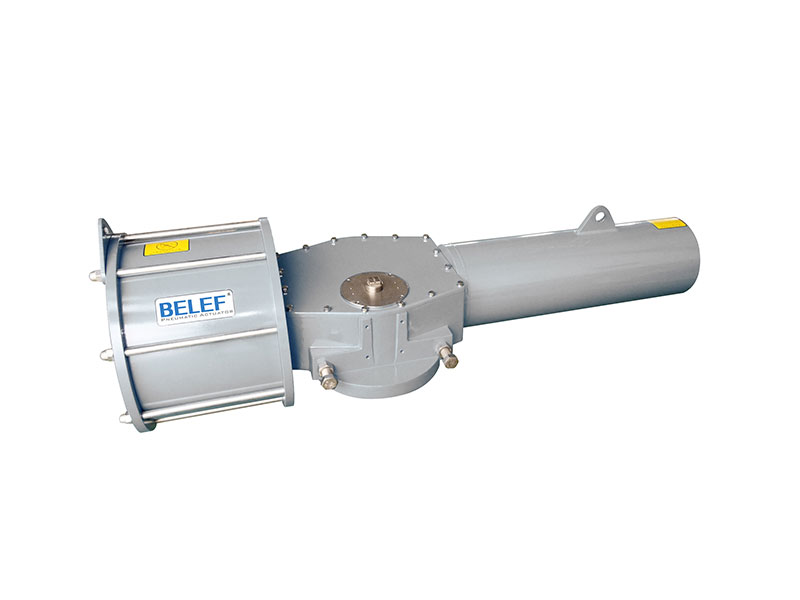1. Membrane Actuator
Diaphragm actuators are very commonly used. It can be used as a universal control valve pushing device to form a pneumatic diaphragm actuator. The signal pressure p of the pneumatic diaphragm actuator acts on the diaphragm to deform it, and drives the push rod on the diaphragm to move, so that the valve core is displaced, thereby changing the valve opening. The structure is simple, the price is low, the maintenance is convenient, and the application is wide.
Pneumatic membrane actuators have two forms: direct action and reverse action.
When the signal pressure of the controller or valve positioner increases, the downward movement of the valve stem is called a positive acting actuator; when the signal pressure increases, the upward movement of the valve stem is called a counteracting actuator. The signal pressure of the positive acting actuator passes through the membrane air chamber above the corrugated diaphragm; the signal pressure of the counteracting actuator passes through the membrane air chamber below the corrugated diaphragm. By replacing a single component, the two can be retrofitted to each other.
2. Piston type actuator
The pneumatic piston actuator moves the piston in the cylinder to generate thrust. Obviously, the output force of the piston type is much greater than that of the film type. Therefore, the diaphragm type is suitable for occasions with small output and high precision; the piston type is suitable for occasions with large output, such as large diameter, high pressure drop control or butterfly valve push devices. In addition to the diaphragm type and piston type, there are also long-stroke actuators with long-stroke and large torque, which are suitable for occasions where angular displacement and large torque are output.
The signal standard received by the pneumatic actuator is 0.02 ~ 0.1MPa.
The main components of pneumatic piston actuators are cylinders, pistons and push rods. The piston in the cylinder moves with the pressure difference between the two sides of the cylinder. According to the characteristics, it is divided into two types: proportional type and two-position type. According to the two-station type, according to the working pressure on both sides of the input piston, the piston is pushed from the high pressure side to the low pressure side. The proportional type is to add a valve positioner on the basis of the two-position type, so that the displacement of the push rod is proportional to the signal pressure.
3. Gear rack actuator
The rack and pinion type (double piston rack type) pneumatic actuator has the characteristics of compact structure, beautiful appearance, fast response, stable operation and long service life. All accessories adopt advanced anti-corrosion treatment technology, which can adapt to various harsh working conditions. Its high, low temperature and various special stroke actuators have good performance in various application fields.


 customer service1
customer service1  customer service2
customer service2 